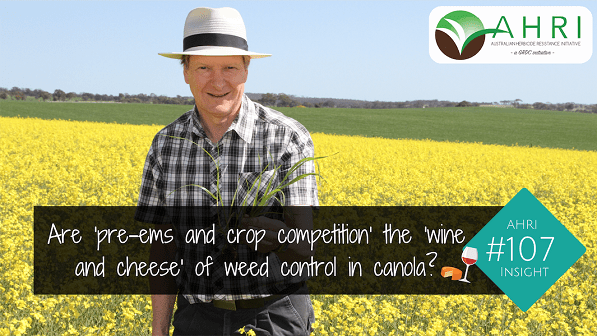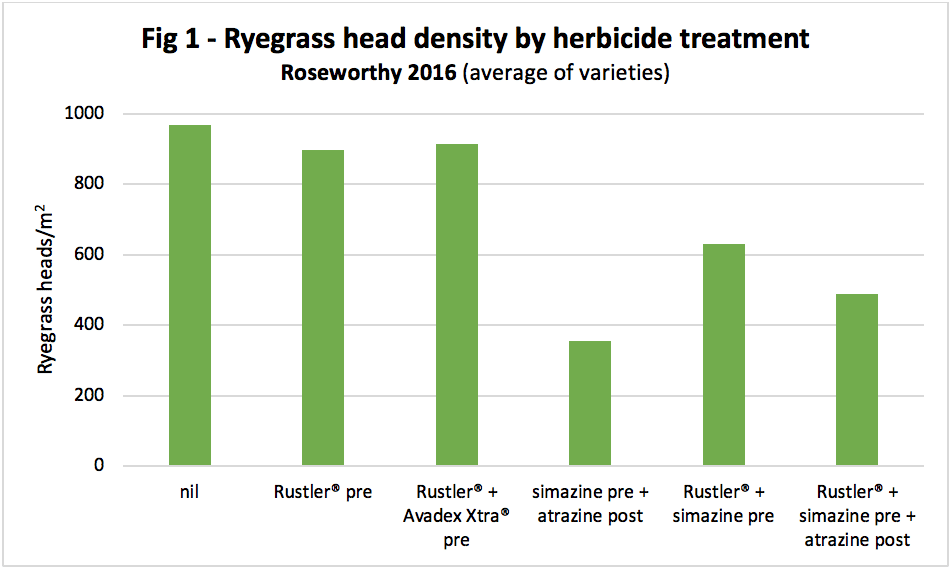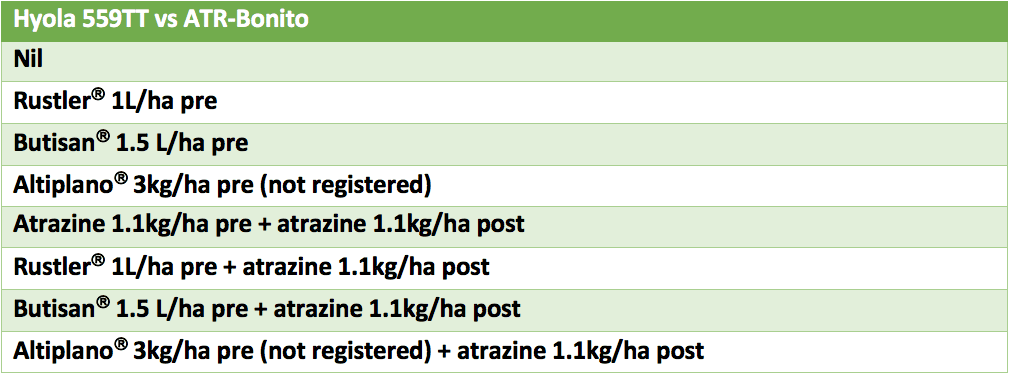WINE and cheese. Strawberries and cream. Crop competition and pre-emergent herbicides.
Okay, so the last one doesn’t quite have the same ring about it but they really do go together nicely. Combining a competitive canola variety with pre-emergent herbicides has proven to be an effective strategy for reducing annual ryegrass seed set. Considering limited post-emergent options and increasing levels of ryegrass resistance to clethodim, the ‘crop competition + pre-emergent’ combo is a strategy which deserves serious attention.
Trials by University of Adelaide researchers Sam Kleeman, Gurjeet Gill and Chris Preston, together with the Hart Field-Site Group and Southern Farming Systems, showed that with effective pre-emergent herbicides, a competitive hybrid canola variety can reduce ryegrass seed set by 50 per cent compared with a less competitive open-pollinated (OP) variety.
That’s impressive. But should we tar all OP varieties with the same brush? The research team repeated the trial using a more competitive OP variety and found crop competition to be similar to the hybrid variety. Research by Dr Deirdre Lemerle has shown varieties can vary significantly in their competitive ability, but hybrids were found to be generally more competitive than OP varieties.
Regardless of hybrid or OP, it’s definitely worth assessing competitive ability when choosing varieties – together with an effective pre-emergent herbicide strategy, it just might make a great combo.
The trials – 2016
Clethodim for annual ryegrass control has been a major feature of canola production systems, but the level of resistance to clethodim is increasing rapidly. In 2016, the University of Adelaide research team set up a trial at Roseworthy, South Australia, to look at the effects of crop competition and pre-emergent herbicide strategies on managing ryegrass in canola.
The trial compared two triazine tolerant canola varieties, a hybrid (Hyola 559TT) and an open-pollinated (ATR-Stingray), sown 14-May at 35 plants/m2 (rates adjusted for seed size). Each variety was subjected to six pre-emergent herbicide strategies.
Table 1. Pre-emergent herbicide treatments at Roseworthy, 2016
Although pre-emergent herbicides reduced ryegrass numbers early in the season, under high ryegrass pressure and with no follow-up control, the density of ryegrass heads later in the season was similar to the untreated ones. Where atrazine was applied post-emergent (under ideal moisture conditions), ryegrass control improved significantly, with ~50pc fewer ryegrass heads than the untreated.
The hybrid variety Hyola 559TT had a significant effect on ryegrass control with an average of 40pc fewer ryegrass heads than the open-pollinated ATR-Stingray (Fig 3). Seed set per ryegrass plant was approximately 2-fold higher in ATR-Stingray.
Across all herbicide treatments, the average yield of Hyola 559TT was double that of ATR-Stingray and appeared to better maintain grain yield in the presence of weeds. When comparing the relationship between ryegrass density and grain yield, ATR-Stingray yields declined more sharply at low to moderate ryegrass densities than Hyola 559TT.
The trials – 2017
Fast forward to 2017 and similar trials were repeated at Roseworthy and Hart. This time the OP variety ATR-Stingray was replaced with ATR-Bonito, and some robust pre-emergent herbicides were included.
Table 2. Pre-emergent herbicide treatments at Roseworthy and Hart, 2017
At the low-pressure Hart site, atrazine applied pre-and post-emergent was the most effective treatment at reducing ryegrass head density (by 95%). Where weed pressure was much higher at Roseworthy, the more robust treatment of Rustler + atrazine was more effective, reducing ryegrass heads by ~80% (Fig 2).
In contrast to the 2016 trial, there was no significant impact of variety on ryegrass density at either site (Fig 3). ATR-Bonito showed comparable early vigour and growth to Hyola 559TT throughout the season. Yields were similar at Roseworthy, but Bonito out-yielded Hyola 559TT at Hart, favoured by the shorter season.
Conclusion
Row spacing has taken centre stage in recent years in the efforts to increase crop competition, but these trials have reinforced the impact competitive varieties can have on weed numbers. Crop competition + robust pre-emergent herbicides may just be the new ‘canola combo’. Follow it up with the ‘crop top + harvest weed seed control’ combo and ryegrass won’t stand a chance.
Further information
Weed control and its impact on yield (Preston et al 2017)
Lemerle et al (2014). Competitive ability of Australian canola (Brassica napus) genotypes for weed management. Crop & Past. Sci. 65: 1300-1310.
Source: Australian Herbicide Resistance Initiative, AHRI







HAVE YOUR SAY